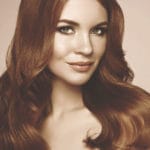Personalizing Your Hair Care Routine
Healthy, shiny, and manageable hair is a universal beauty goal that crosses cultures and generations. However, achieving this goal is not a one-size-fits-all journey. Each person has a unique hair type with its own set of needs and characteristics. Understanding these nuances is the first step towards developing a personalized hair care routine. This article aims to guide you through the considerations for different hair types and how they can influence your hair care regimen. You can always go to the top rated hair salons to get a treatment that will serve you well.
Understanding Your Hair Type
Before delving into specific hair care routines, it’s important to understand your hair type. Hair type can be categorized based on several factors including the shape of the hair shaft, which can be straight, wavy, curly, or coily; the thickness of individual hair strands, which can be fine, medium, or coarse; and the overall volume of hair, determined by the number of individual hair strands on your scalp, which can be thin, medium, or thick.
Identifying your hair type can be an eye-opener, as it impacts how your hair responds to different hair care products and styling methods. For instance, fine hair can easily become weighed down by heavy products, while coarse hair might need extra nourishment to combat dryness.
Tailoring Care for Straight Hair
Straight hair, characterized by its smooth texture and glossy appearance, has its oil glands produce natural oils that easily travel down the hair shaft, often making it more prone to oiliness. While this helps to keep the hair naturally conditioned, it may necessitate frequent washing to prevent buildup and maintain a fresh look.
When selecting products, opt for a gentle, balancing shampoo that can cleanse without stripping natural oils and a lightweight conditioner that won’t weigh the hair down. Heat protection products are also crucial for straight hair, which is often subjected to heat styling tools.
Nurturing Wavy and Curly Hair
Unlike straight hair, wavy and curly hair types have bends and turns that make it difficult for the scalp’s natural oils to travel down the hair shaft. This often leads to drier hair and potential frizz. Incorporating a hydrating shampoo and conditioner in your hair care routine can help infuse your hair with the moisture it needs.
A defining cream or gel can help shape waves and curls, reducing frizz and adding shine. Since wavy and curly hair types are more susceptible to heat damage, minimizing the use of heat styling tools and always using a heat protectant when necessary can also help maintain the health of your hair.
Caring for Coily Hair
Coily or type 4 hair, often found in people of African descent, is the most fragile of the hair types. The coil shape of the hair strand means that it has more points of potential weakness, making it more susceptible to damage and breakage.
Deep conditioning treatments and hair oils are especially beneficial for coily hair, providing the necessary moisture and nourishment that this hair type needs. Gentle detangling is also crucial, preferably using a wide-tooth comb on damp, conditioned hair to minimize breakage, especially after getting hair color and highlights Rockville.
Assessing and Addressing Your Hair’s Needs
It’s also important to remember that hair care is not just about your hair type. It’s about assessing your hair’s current state and addressing its specific needs. Whether it’s dryness, breakage, thinning, or scalp issues, your hair care routine should be tailored to tackle these concerns.
For example, if you have dry, brittle hair, incorporating a deep conditioning mask into your weekly routine can make a significant difference. If you’re dealing with thinning hair, you might want to consider hair products fortified with proteins that can strengthen hair strands.
The Importance of Hair Texture
Apart from the general classification of hair types, another crucial factor that affects your hair care routine is your hair texture – be it fine, medium, or coarse. Fine hair, despite its silky and soft texture, is prone to breakage and can get greasy quickly. On the other hand, coarse hair, known for its strength and thickness, is often resistant to styling and can get dry and frizzy.
Your hair texture plays a significant role in determining the type and quantity of products you should use. For instance, if you have fine hair, using lightweight, volumizing products can prevent your hair from looking flat or oily. However, those with coarse hair might benefit from heavier, moisturizing products that can tame frizz and add shine.
Hair Density and Volume Considerations
Your hair’s density, which refers to the number of individual hair strands on your scalp, also affects your hair care routine. Those with thin hair may find that their scalp gets oily quickly, requiring more frequent washing. However, thick hair, which consists of more hair strands, often needs more conditioning and can handle heavier products.
Hair volume is another aspect to consider. Hair lacking in volume might benefit from volumizing shampoos and styling products, whereas those with high-volume hair may need to use smoothing products to prevent their hair from becoming too puffy or unmanageable.
Evaluating the Health of Your Hair and Scalp
When personalizing your hair care routine, it’s essential not to overlook the condition of your scalp. After all, a healthy scalp is the foundation for healthy hair. If your scalp is dry, itchy, or flaky, it may need extra care, such as a scalp scrub or a treatment with nourishing oils.
Similarly, the health of your hair strands is equally important. If your hair is damaged due to factors like heat styling, chemical treatments, or environmental stressors, you may need to incorporate repairing products, such as protein treatments or deep conditioners, into your routine.
Incorporating Lifestyle and Environmental Factors
Last but not least, your lifestyle and environment can influence your hair care routine. If you live in a humid climate, for example, you may need to use anti-frizz products. On the other hand, those living in dry climates might need to use extra moisturizing products to prevent their hair from drying out. Your activity level, including whether you sweat a lot or swim regularly, can also affect your hair’s needs.
Conclusion
Personalizing your hair care routine requires a comprehensive understanding of your unique hair type, its specific needs, and its responses to different products and care techniques. While the process might require some trial and error, the outcome of healthier, more vibrant hair is well worth the effort.
Remember, your hair is as individual as you are, and taking the time to learn about and care for it can not only improve its health and appearance but also boost your confidence and personal satisfaction. Regardless of your hair type, the key to optimal hair health lies in personalizing your hair care regimen and giving your hair the specific care it needs. Always ake sure that you are going to the best hair straightening salons Rockville if you are looking into keratin or Brazilian straightening.
Next PagePrevious Page


